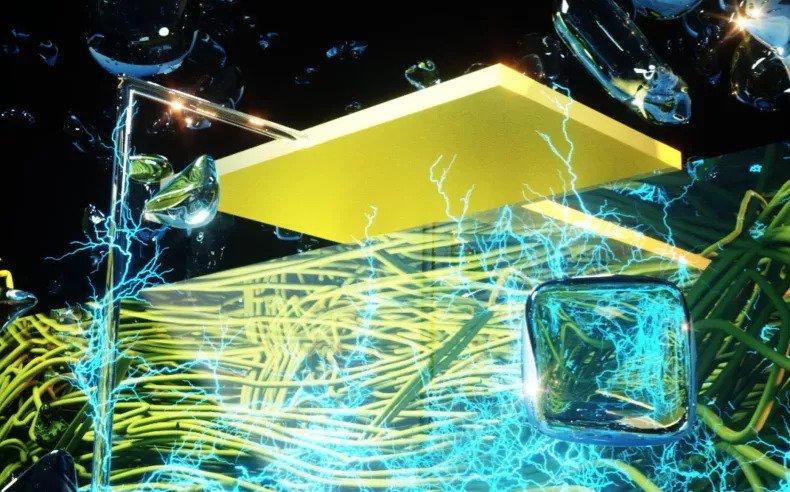A recent research paper in Advanced Materials reveals a groundbreaking method of harnessing electricity from the air. The study demonstrates that by incorporating nanopores smaller than 100 nanometers in any material, it becomes possible to collect the inherent electrical charge of water molecules in the air.
These nanopores are equivalent in size to the mean free path between water molecules, representing the distance covered by molecules in the air before colliding with another water molecule.
To exploit this phenomenon, researchers created a device with tiny pores measuring 100nm, enabling the capture of the natural electrical charge of the water molecules. Known as an “air generator” or Air-gen, this technology takes advantage of the water molecules’ interaction with the pore edges as they traverse the material’s thin layer.
“This is very exciting,” Xiaomeng Liu, lead author of the paper said in a statement. “We are opening up a wide door for harvesting clean electricity from thin air.” Liu is a graduate student in electrical and computer engineering at UMass Amherst’s College of Engineering.

Due to the pore size, the upper portion of the Air-gen experiences a higher influx of charged water molecules compared to the lower portion. This charge imbalance mimics the principle seen in clouds, ultimately generating a flow of electrical charge akin to lightning.
“The air contains an enormous amount of electricity,” Jun Yao said in the statement. Yao is an assistant professor of electrical and computer engineering at the College of Engineering at UMass Amherst and the paper’s co-author. “Imagine a future world in which clean electricity is available anywhere you go,” he said. “The generic Air-gen effect means that this future world can become a reality.”

“Think of a cloud, which is nothing more than a mass of water droplets,” Yao said. “Each of those droplets contains a charge, and when conditions are right, the cloud can produce a lightning bolt—but we don’t know how to reliably capture electricity from lightning.
“What we’ve done is to create a human-built, small-scale cloud that produces electricity for us predictably and continuously so that we can harvest it. What’s more shocking is that this device can be made from nearly any material.
“The ability to generate electricity from the air—what we then called the ‘Air-gen effect’—turns out to be generic: literally any kind of material can harvest electricity from air, as long as it has a certain property,” Yao said.
While previous attempts have been made, this new design exhibits prolonged effectiveness, offering the potential for continuous and sustainable power generation.
The researchers envision that this groundbreaking discovery can revolutionize electricity production worldwide by utilizing any available material. Unlike other renewable energy sources reliant on sunlight or wind, these electricity harvesters capitalize on the perpetual humidity present in the air.
Furthermore, the Air-gen can be stacked, enabling the scalability of electricity generation. The authors anticipate that thousands of stacked Air-gens can deliver kilowatt-level power, making it suitable for general electrical utility applications.
“The idea is simple,” says Yao, “but it’s never been discovered before, and it opens all kinds of possibilities. You could image harvesters made of one kind of material for rainforest environments, and another for more arid regions.”
Additionally, the Air-gen could be stacked, scaling up the amount of electricity generated. According to the authors, thousands of Air-gens stacked together could deliver kilowatt-level power for general electrical utility usage.


